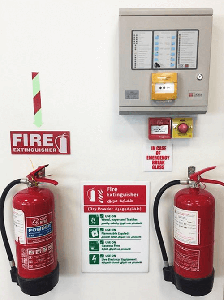by | May 11, 2018 | Uncategorized
KEY CEO, Stan Mitchell discusses the recent approval of the ISO 41001 Management Systems Standard for Facility Management.
by | Apr 6, 2018 | Uncategorized
This article looks at how simple reporting can bring CAFM into the Board Room. While the benefits of Computer-Aided Facilities Management (CAFM) for operational and tactical FM are well established, its capacity to enable Upper Management remains a largely overlooked opportunity.

Bringing CAFM into the Board Room
If you’re a manager of large operation, what keeps you awake at night? High on the list is the creeping worry that things for which you’re responsible –upon which your finances and credibility depend– are somewhere going awry and there’s nothing you can do about it.
Managing a large organisation in the c21st bears similarities to governing an overseas Empire in the c18th. Not only is it bewilderingly complex and slippery, but news on critical issues, issues requiring an immediate response, invariably arrives long after the event.

Urgent c18th communications
With CAFM this doesn’t always have to be the case.
Different Contexts, Same Reporting Needs
Two recent KEY projects provide good illustration, both involving CAFM mobilisation.
The first is a UK outsourcing business with 40+ sites, and involving over half-a-million assets. The second is a multinational with 19 locations across 16 developing countries, each with local teams, suppliers and situation-specific requirements.
Despite differing contexts, a primary driver behind both is the promise of real-time operational control for Upper Management. However, how do you distil an ocean of data into simple information which can support timely strategic decision-making?
KEY’s reporting solution for both projects entailed notable similarities, including simple headline reporting in the following areas:
Continuous Operational Improvement
Performance Management:
A supplier which is not fit-for-purpose requires immediate action, e.g. imposing clear penalties or finding a replacement where appropriate.
This can be facilitated with a simple report which summarises numbers of Service Level Agreement fails and passes per supplier, where drilldown details are available should needs be for further investigation or to send to suppliers.
Resource Planning:
Unexpected bottlenecks and associated firefighting can put unnecessary pressure on the effective functioning and management of your business.
Automated analyses can predict potential bottlenecks and the additional resources or overtime needed to cover increased demand.
Environment, Health and Safety (EHS):
Failure to fulfil moral and statutory EHS duties can cause harm to your employees, contractors, bottom-line and reputation.
Regular summary reports on EHS activities helps to keep it front-of-mind and to flag problems before they occur.
Operational Budgeting
Financial Planning:
In an uncertain business environment, having a solid grasp on your Balance Sheet and Profit and Loss is essential.
A comprehensive asset inventory can drive instant and predictive reports for depreciation and capital expenditure.
Facilities Management:
It isn’t always easy to discern where operational investment will deliver the best return.
CAFM data collection and interrogation can enable clarification and comparison of potential efficiency gains.
Conclusion:
This article outlined five areas where vast CAFM datasets can be converted into simple reports that turn strategic management by the rear-view mirror into an agile predictive mindset. These involved both operational management (suppliers, resources, EHS) and budgeting (finances and FM).
It is argued in a world of increasing competitive and economic pressures, the level of operational and financial control an Executive Reporting Dashboard can enable are becoming business critical for any organisation.
Interested in finding more about KEY’s CAFM Executive Reporting solutions? Then talk to one of our True FM Experts now.
by | Mar 30, 2018 | Uncategorized
KEY’s CEO, Stan Mitchell is interviewed by Facilitiesnet (USA) about the five cross-functional competencies ProFMI have identified as underpinning superior organisational performance, and their applications to international facility management.
by | Mar 23, 2018 | Uncategorized
In February 2018, KEY’s International Facility Management (FM) team convened to share learnings on how to build a strong Environmental Health and Safety Culture in organisations and countries new to the concept.

Informed by considerable experience at facilitating Environmental Health and Safety (EHS) culture change for multinationals across emerging markets, the conversation produced 10 Top Tips which may assist anybody facing similar challenges:
1. Communicate EHS as a principle, not a task-to-do. It is essential to keep reinforcing the idea that EHS is about safeguarding life and health, not just corporate requirement and procedure.

2. Always lead by example. FM’s should be seen to integrate the EHS principle into all relevant considerations and decisions, not only when required. Truly walking-the-walk is often the most effective way to educate the uninitiated.
3. Hand-pick a local team that understands EHS’s importance. Your most committed champions of Environmental Health and Safety Culture change are frequently those who have been affected by poor EHS, personally or via someone close to them.
4. Appoint an EHS coordinator with good communication skills. To maintain EHS focus across a multinational, you need a strong-minded specialist adept at managing different perspectives, cultures and languages.
5. Routinely promote EHS awareness. Seek ways to braid EHS into the day-to-day life of the organisation. Tactics can include running regular emergency drills or presenting brief EHS progress reports before every client meeting.

6. Nurture EHS as a shared responsibility. Conduct activities which build perception that EHS isn’t someone else’s job, but about everyone working together for the common good. Monthly staff workshops for EHS education and discussion have proven effective at this.
7. Cultivate local autonomy for EHS problem-solving. Effective Environmental Health and Safety Culture change is about coaching, not management. For example, when conducting an EHS site audit, leave it to the local team to propose solutions to the snag list. The process of reviewing details of issues and regulatory environment has proved effective at promoting local self-education, ownership and responsibility.

8. Leverage FM Technology. Cloud-based FM technologies can transform your control, visibility and systemisation of EHS activities across a complex portfolio. They also improve EHS awareness at all levels of the organisation by enabling historical and real time performance tracking.
9. Ensure the client has your back. As a rule, KEY always favours the carrot over the stick. Nevertheless, a clear mandate and commitment to consequences from Upper Management and Human Resources often helps to motivate local parties to action.
10. Patience and Persistence. Don’t get discouraged by your rate of progress or setbacks. A new culture isn’t built in a day, but stick with our Top Tips and you’ll get there soon enough.
Interested in learning more?:







Recent Comments